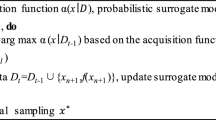Abstract
An experience is presented using the finite element method (FEM) and data mining (DM) techniques to develop models that can be used to optimize the skin-pass rolling process based on its operating conditions. A FE model based on a real skin-pass process is built and validated. Based on this model, a group of FE models is simulated with different adjustment parameters and with different materials for the sheet; both variables are chosen from preset ranges. From all FE model simulations, a database is generated; this database is made up of the above mentioned adjustment parameters, sheet properties and the variables of the process arising from the simulation of the model. Various types of data mining algorithms are used to develop predictive models for each of the variables of the process. The best predictive models can be used to predict experimentally hard-to-measure variables (internal stresses, internal strains, etc.) which are useful in the optimal design of the process or to be applied in real time control systems of a skin-pass process in-plant.
Similar content being viewed by others
References
Álvarez de Sotomayor A, Herrera E J. Permanent Elimination of the Yield-Point Phenomenon in AISI 430 Stainless Steel by Skin-Pass rolling [J]. Journal of Materials Science, 1994, 29 (22): 5833.
Asgari H, Bakhtiari A R, Toroghinejad M R, et al. Influence of Force Variations in Skin Pass Rolling on Texture and Surface Reactivity of Hot Dip Analysis Low Carbon Steel Sheets [J]. Ironmaking Steelmaking, 2008, 35(7): 545.
Tamano T. Finite Element Analysis of Steady Flow in Metal Processing [J]. Journal of Japan Society for Technology of Plasticity, 1976, 14(1): 766.
Mori K, Oskada K, Oda T. Simulation of Plane Strain Rolling by Rigid Plastic Finite Element Method [J]. International Journal of Mechanical Sciences, 1986, 24(9): 519.
Liu C, Hartley P, Sturgess C E N, et al. Elastic-Plastic Finite Element Modeling of Cold Rolling of Strip [J], International Journal of Mechanical Sciences, 1985, 27(7/8): 531.
Hitchcock J H. Roll Neck Bearing [R]. New York: American Society of Mechanical Engineers, 1935.
Krimpelstäetter K, Hohenbichler G, Finstermann G, et al. New Non-Circular Arc Skin Pass Model [J]. Ironmaking Steel-making, 2007, 34(4): 295.
Jing-na S, Hua-gui H, Feng-shan D, et al. Nonlinear Finite Element Analysis of Thin Strip Temper Rolling Process [J]. Journal of Iron and Steel Research, International, 2009, 16 (4): 27.
Ramberg W, Osgood W R. Description of Stress-Strain Curves by Three Parameters [R]. Washington: National Advisory Committee for Aeronautics, 1943.
Oden J T. Martins J A C. Existence and Uniqueness Results for Dynamic Contact Problems With Nonlinear Normal and Friction Interface Laws [J]. Non-Linear Analysis, 1987, 11 (3): 407.
Aha D, Kibler D. Instance-Based Learning Algorithms [J]. Machine Learning, 1991, 6(1): 37.
Portnoy S, Koenke R. The Gaussian hare and the Laplacian Tortoise [J]. Statistical Science, 1997, 12(4): 279.
Haykin S. Neural Networks, a Comprehensive Foundation [M]. 2nd ed. New Jersey: Prentice Hall, 1999.
Quinlan J R. Learning With Continuous Classes [C]. Proceedings of the 5th Australian Joint Conference on Artificial Intelligence. Singapore: World Scientific, 1992: 343.
Witten I H, Frank E. Data Mining: Practical Machine Learning Tools and Techniques [M]. 2nd ed. San Francisco: Morgan Kaufmann, 2005.
Author information
Authors and Affiliations
Corresponding author
Additional information
Foundation Item: Item Sponsored by Spanish Ministry of Education and Science (DPI2O07-61090); European Commission Research Programme of the Research Fund for Coal and Steel (RFS-PR-06035)
Rights and permissions
About this article
Cite this article
Escribano, R., Lostado, R., Martínez-de-Pisón, F.J. et al. Modelling a Skin-Pass Rolling Process by Means of Data Mining Techniques and Finite Element Method. J. Iron Steel Res. Int. 19, 43–49 (2012). https://doi.org/10.1016/S1006-706X(12)60098-3
Received:
Published:
Issue Date:
DOI: https://doi.org/10.1016/S1006-706X(12)60098-3




